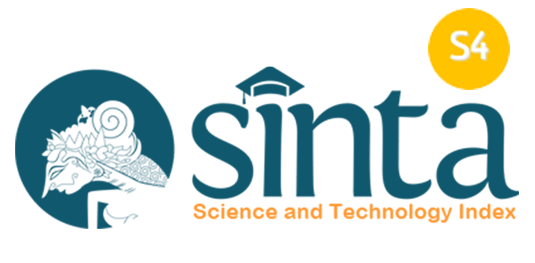Philological Studies on Ahmad Mutamakkin Court in Kajen Text Perspective
Abstract
The Kajen Text Manuscript is a very important reference regarding the history of Haji Ahmad Mutamakkin, which the hands of philologists have not touched. This philological research aims to find out the trial process of Haji Ahmad Mutamakkin from the perspective of the Kajen community through the Kajen Text. This type of research is qualitative research with a philological approach that seeks to answer problems through library research. The results of this study inform that Kajen's text places Haji Ahmad Mutamakkin as a respected faqih because of his far-reaching and broad views. As a professor of religion, Mutamakkin preached from one place to another, which was considered the right target. The accusation of heresy is the implication of a leaflet that intends to corner Mutamakkin. The Kajen's text describes the trial of Mutamakkin's case, which shows Mutamakkin's expertise in providing arguments for his convictions. An advantage possessed by Mutamakkin as described in Kajen's text is his firmness in upholding the principles of establishing his creed. His demeanor seemed calm, and he looked elegant in front of the audience. Kajen's text states that the King eventually became Mutamakkin's disciple after following Mutamakkin's allegiance to teachings, ending with Mutamakkin's acquittal of all his charges.
Downloads
References
Bizawie, Z.M.(2002). Perlawanan Kultural Agama Rakyat: Pemikiran dan Paham Keagamaan Syeikh Ahmad Al-Mutamakkin dalam Pergumulan Islam dan Tradisi (1945 – 1740). Yogyakarta dan Jakarta: SAMHA.
Fathurahman, O. (2015). Filologi Indonesia Teori dan Metode.Jakarta: Prenadamedia Group.
Gusmian, I. (2013). Pemikiran Tasawuf Syeikh Ahmad Mutammakin: Kajian Hermeneutik atas naskah ‘Arsy al-Muwahidun. IAIN Surakarta: Jurnal Lektur Keagamaan. 11(1).
Heny, S. (2015). Pengantar Teori dan Metode Penelitian Filologi. Surabaya: Unesa University Press.
Kurniawan, G. F. (2019). Dominasi Orang-orang Besar dalam sejarah Indonesia: Kritik Politik Histrografi dan Politik Angkatan. Jurnal Secarah Citra Lekha. 4 (1).
Hakim, T. (2020) Sang Panggawening Suksma: Pakubuwana II Mengakui Kewalian Mbah Ahmad Mutamakkin. Buletin Kanjengan Edisi I.
Muslich, M. K. (2015) Resolusi Konflik Kasus Syaikh Al-Mutamakkin Dalam Teks Kajen dan Cebolek. (Al-Tahrir) 15(1).
Nasuha, A. R. (1953). Teks Kajen Sejarah Mbah Mutamakkin. Manuskrip.
Nasuha, A. R. (nd). Biografi Ahmad Rifa’i Nasuha. Manuskrip.
NS, E.S. (2012). Filologi. Galia Indonesia.
Rif’an, A. (2013). Kearifan Local (Local Wisdom) Syekh Ahmad Mutamakkin (1645-1740 M.) dan Pemikiran Pendidikan Pesantren. Journal Studi Sosial. 2.
Rosyid, A. (2022) Anjing dan Intrik Haji Mutamakkin Dalam Serat Cebolek (Perlawanan Ulama Pada Rezim Dalam Hermeneutika Refleksi Paul Ricoeur), (ISLAMIKA INSIDE: Jurnal Keislaman dan Humaniora) 8 (2).
Sa’adah, N. (2020). Terjemah dan Tafsir di Jawa Awal Abad ke-18, Studi Filologi Bundel Naskah Kajen. ( Jurnal Al-Itqan) 6 (2).
Sanusi,I. (1999) Perjuangan Syaikh. KH. Ahmad Mutamakkin. Pati: Himpunan Siswa Mathali’ul Falah.
Septiana, N. & Rosyid, M. Z. (2018). Pendekatan Filologi dalam Studi Islam. PANCAWAHANA: Jurnal Studi Islam, 3(2).
Subandiyah, H. (2015). Pengantar Teori dan MetodePenelitian Filologi. Surabaya: Unesa UniversityPress.
Supratno, H.S.N.( 2015). FolklorSetengah Lisan Sebagai Media PendidikanKarakter Mahasiswa. Surabaya: UnesaUniversity Press.
Wijaya, S.B.M., Joebagio,H, dan Sariyatun. (2018) Kontruksi Pembelajaran Sejarah Islam Berbasis Teks Kajen dan Serat Cebolek dengan Pendekatan Ways of Knowing, (JUSPI: Jurnal Sejarah Peradaban Islam) 2 (2).

This work is licensed under a Creative Commons Attribution-ShareAlike 4.0 International License.





















